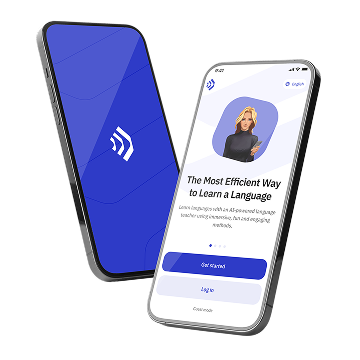One cannot discuss Italian music without mentioning opera, a genre that originated in Italy at the end of the 16th century. The early operas were performed in courts and were accessible only to the elite. As the genre evolved, it became more popular and public opera houses were established. This period, often referred to as the “Golden Age of Italian Opera,” saw composers like Claudio Monteverdi, Gioachino Rossini, Giuseppe Verdi, and Giacomo Puccini rise to prominence.
Monteverdi’s “L’Orfeo,” composed in 1607, is often considered the first great opera. It combines music and drama in a way that was revolutionary at the time. Listening to Monteverdi’s works, language learners can appreciate the archaic form of Italian, which, while different from contemporary usage, provides a historical context for the language.
Verdi and Puccini, on the other hand, brought Italian opera to the masses. Verdi’s “La Traviata” and Puccini’s “La Bohème” are staples of the operatic repertoire. The libretti (texts) of these operas are written in poetic and dramatic Italian, which can be a useful resource for advanced language learners. The emotional depth and clarity of the characters’ expressions make it easier to grasp the meanings of words and phrases.
Learning Tips:
1. **Libretto Study**: Start by reading the libretto of an opera in both Italian and English. This will help you understand the context and meaning of the words.
2. **Listening Practice**: Listen to the arias and recitatives while following along with the text. Pay attention to pronunciation, intonation, and emotion.
3. **Sing Along**: Try singing along with the opera. This can improve your pronunciation and fluency.
4. **Cultural Context**: Learn about the historical and cultural context of the opera. This will deepen your understanding of the language used.
Italian Folk Music
While opera represents a more formal and elite aspect of Italian music, folk music provides a glimpse into the daily lives and traditions of ordinary Italians. Each region of Italy has its own distinct musical traditions, often linked to local customs, festivals, and dances.
For instance, the tarantella is a lively dance originating from Southern Italy, particularly Naples and Sicily. The lyrics of tarantella songs are usually in regional dialects, offering a unique challenge and an opportunity to explore the linguistic diversity of Italy. The themes often revolve around love, work, and social issues, providing practical vocabulary that can be useful in everyday conversations.
Learning Tips:
1. **Regional Focus**: Choose a region and focus on its folk music. This will help you understand the regional dialect and cultural nuances.
2. **Lyrics Translation**: Translate the lyrics of folk songs. This can enhance your vocabulary and comprehension skills.
3. **Cultural Exploration**: Learn about the festivals and traditions associated with the music. This will give you a richer cultural context for the language.
4. **Music and Dance**: Participate in traditional dances if possible. This can make the learning process more interactive and enjoyable.
Classical Composers and Instrumental Music
Italy has also produced some of the most renowned classical composers, such as Antonio Vivaldi, Domenico Scarlatti, and Arcangelo Corelli. While their music is primarily instrumental, it still offers valuable insights into the Italian language, especially in terms of musical terminology.
Vivaldi’s “The Four Seasons” is a perfect example. Each concerto is accompanied by a sonnet, presumably written by Vivaldi himself, describing the scenes depicted in the music. Reading these sonnets can improve your understanding of descriptive language and poetic forms.
Learning Tips:
1. **Musical Terminology**: Learn the Italian terms used in classical music (e.g., allegro, adagio, forte). This will expand your vocabulary and help you understand musical instructions.
2. **Sonnet Study**: Read and translate the sonnets or any accompanying texts. This will improve your comprehension and appreciation of poetic language.
3. **Historical Context**: Study the lives and times of the composers. Understanding their backgrounds can provide a deeper understanding of their works and the language they used.
Modern Italian Music
While historical music offers a rich learning resource, modern Italian music should not be overlooked. Contemporary genres like pop, rock, and hip-hop are incredibly popular in Italy and can be more accessible to language learners.
Artists like Laura Pausini, Eros Ramazzotti, and Jovanotti have international followings and their songs often touch on universal themes of love, life, and personal experiences. The lyrics are usually in standard Italian, making them easier to understand and more relevant to modern conversations.
Learning Tips:
1. **Current Hits**: Listen to current Italian hits. This will expose you to modern slang and colloquial expressions.
2. **Lyric Analysis**: Analyze the lyrics of your favorite songs. Try to understand the meaning behind the words and phrases.
3. **Sing Along**: Singing along with modern songs can improve your pronunciation and fluency.
4. **Cultural Trends**: Follow Italian music charts and trends. This will help you stay updated with contemporary language and culture.
The Role of Music in Language Learning
Music has a unique way of engaging multiple areas of the brain simultaneously, making it an effective tool for language learning. Here are some ways in which music can enhance your Italian language skills:
Improved Memory
Songs are inherently repetitive, which aids in memorization. The melody and rhythm of a song make it easier to remember words and phrases. This is particularly useful for learning vocabulary and verb conjugations.
Enhanced Pronunciation
Listening to and singing along with Italian songs can improve your pronunciation and intonation. The musical context helps you to mimic the natural rhythm and stress patterns of the language.
Cultural Understanding
Music is a reflection of culture. By exploring Italian music, you gain insights into the cultural, historical, and social contexts of the language. This deeper understanding can enhance your overall language proficiency.
Listening Skills
Music improves your listening skills by exposing you to different accents, dialects, and styles of speech. This can be particularly beneficial in understanding spoken Italian in various contexts.
Practical Steps to Incorporate Music into Your Learning Routine
Create a Playlist
Compile a playlist of Italian songs that you enjoy. Include a mix of genres, from opera to modern pop, to expose yourself to different styles of language use.
Use Apps
There are several language learning apps that incorporate music into their teaching methods. Apps like LyricsTraining allow you to fill in the blanks of song lyrics while listening, making it a fun and interactive way to learn.
Join a Community
Join online communities or local groups of Italian language learners who share an interest in music. This can provide a supportive environment and additional resources for learning.
Attend Concerts and Performances
If possible, attend live performances of Italian music. This immersive experience can enhance your understanding and appreciation of the language.
Conclusion
Understanding historical Italian music and learning the language are deeply interconnected. From the grandeur of Italian opera to the simplicity of folk songs, each genre offers unique insights into the Italian language and culture. By incorporating music into your language learning routine, you can improve your memory, pronunciation, and comprehension skills while enjoying the rich musical heritage of Italy. So, whether you’re a fan of Verdi or Jovanotti, let the music guide your journey to mastering Italian.







